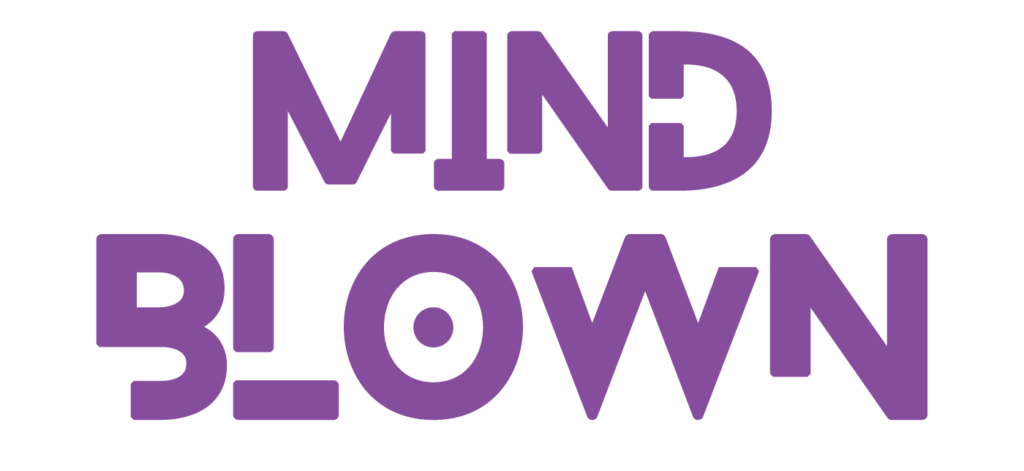
Choosing Your Battlefield: Which Social Media Platforms Deliver the Best ROI for Your Business?
In the ever-evolving landscape of digital marketing, selecting the right social media platforms can be similar to choosing the battlefield for your brand’s conquest. Businesses must carefully strategize and invest to maximize ROI amidst various social media options, each offering unique demographics, engagement rates, and advertising capabilities. Selecting the right platforms is critical for success in digital marketing.
In this comprehensive guide, we’ll explore the intricacies of various social media platforms, analyzing their strengths, weaknesses, and potential ROI, empowering you to make informed decisions tailored to your business objectives.
Understanding Social Media Platforms: A Diverse Landscape
Before looking into the nitty-gritty of ROI, let’s paint a broad picture of the diverse social media landscape. From Facebook to TikTok, each platform offers distinct opportunities and challenges for businesses aiming to establish a robust online presence.

Facebook: The Titan of Social Networking
With over 3 billion monthly active users worldwide, Facebook reigns supreme as the undisputed king of social networking. Marketers have long revered Facebook for its unparalleled reach and robust advertising capabilities. According to the HubSpot State of Marketing Report (2023), Facebook boasts a superior ROI compared to its counterparts. Moreover, one in four marketers believe Facebook as an effective platform for fostering community engagement, making it a quintessential tool for brand building.
Explore more about Facebook’s marketing strategies.
Instagram: Visual Storytelling Carnival
In the realm of visual content, Instagram emerges as a challenging contender, boasting 2 billion monthly active users globally. Despite having fewer users than Facebook, Instagram garners 23% more engagement, making it a hotspot for immersive brand storytelling. The platform’s short and quick content feature, Instagram Stories, offers unparalleled opportunities for organic reach and audience engagement, as highlighted in the HubSpot State of Marketing Report (2023).
X (formerly Twitter): Navigating Shifting Tides
Formerly known as Twitter, X may have witnessed a decline in active users compared to its heyday, but it still commands a significant presence with over 500 million monthly active users worldwide. Marketers remain divided on its efficacy, with 66% expressing the intent to retain their brand presence on the platform. However, many users plan to explore alternative platforms due to shifting user behaviors and evolving marketing trends.
LinkedIn: The B2B Powerhouse
For B2B marketers, LinkedIn stands out as a beacon of opportunity, boasting over a billion members across 200 countries and regions. With a user base predominantly comprised of professionals aged 25 to 34, LinkedIn offers unparalleled potential for lead generation and industry-specific networking. According to Sprout Social (2023), 40% of B2B marketers hail LinkedIn as the most effective channel for driving high-quality leads, underscoring its indispensability in the realm of professional networking.
Pinterest: Visual Discovery Paradise
With more than 450 million monthly active users, Pinterest serves as a haven for visual discovery and inspiration. Notably, 85% of Pinterest’s weekly users have made purchases on the platform, highlighting its effectiveness as a sales-driven platform. Furthermore, the platform’s predominantly female user base and affluent demographics make it an attractive way for businesses catering to niche markets or luxury goods.
TikTok: The Rise of Short-Form Video
TikTok has swiftly grown as the ultimate destination for short-form video content, captivating audiences with its addictive scrollable interface and viral challenges. With over 627 million downloads worldwide, TikTok presents an unparalleled opportunity for brands to tap into Gen Z and millennial demographics. Marketers can leverage TikTok’s innovative ad formats, such as in-feed ads and branded hashtag challenges, to drive engagement and foster authentic connections with a younger audience segment.
Snapchat: Capturing Gen Z’s Attention
Despite facing stiff competition from rival platforms, Snapchat maintains its relevance with over 400 million daily active users worldwide. With a youthful user base inclined towards the 15-25 age bracket, Snapchat offers unparalleled opportunities for brands aiming to capture the attention of Generation Z. Marketers can leverage the platform’s interactive features and quick content to foster authentic connections and drive engagement.
Here are some real-time use cases showcasing how businesses leverage various social media platforms to achieve their objectives.
Use Cases – Real-Time Examples
Facebook: Building Community and Engagement
Use Case: A local bakery utilizes Facebook to build a strong community around its brand and engage with customers in real-time. The bakery regularly posts mouth-watering photos of its latest creations, shares behind-the-scenes videos of baking processes, and hosts live Q&A sessions with the head pastry chef. Additionally, they encourage customers to share their own baking experiences and recipes, fostering a sense of belonging and camaraderie within the online community.
Instagram: Influencer Partnerships and Visual Storytelling
Use Case: A fashion brand collaborates with influencers on Instagram to showcase its latest collection and drive sales. The brand partners with fashion influencers who align with its target audience and brand aesthetic, providing them with exclusive access to preview new arrivals and share their honest reviews with followers. Through visually stunning posts, Instagram Stories, and IGTV videos, the influencers effectively convey the brand’s narrative and inspire their followers to purchase.
Real-Time Customer Support and Engagement
Use Case: A telecommunications company utilizes Twitter as a primary channel for providing real-time customer support and addressing inquiries. The company’s dedicated support team monitors X mentions and direct messages round the clock, promptly responding to customer queries, troubleshooting technical issues, and providing personalized assistance. By delivering timely and transparent communication, the company enhances customer satisfaction, fosters loyalty, and mitigates potential PR crises.
LinkedIn: Thought Leadership and Professional Networking
Use Case: A tech startup CEO leverages LinkedIn to establish thought leadership in the industry and expand professional networks. The CEO of the startup regularly publishes insightful articles and industry analyses on LinkedIn Pulse, positioning themselves as an authority in their field. They actively engage with peers, industry leaders, and potential investors by participating in relevant LinkedIn Groups, sharing valuable insights, and fostering meaningful conversations.
Pinterest: Product Discovery and Inspiration
Use Case: An interior design firm harnesses the power of Pinterest to showcase its portfolio and inspire potential clients. The firm curates boards featuring diverse design styles, color palettes, and home renovation ideas, providing users endless inspiration for their projects. Additionally, they create shoppable pins linking directly to product listings on their website, making it easy for users to discover and purchase furniture, decor, and accessories featured in their designs.
TikTok: Fostering Brand Authenticity and Creativity
Use Case: An athleisure brand harnesses the creative potential of TikTok to foster brand authenticity and connect with its target audience in innovative ways. By leveraging TikTok’s short-form video format and viral trends, the brand launches a series of engaging challenges and user-generated content campaigns that resonate with fitness enthusiasts and trendsetters alike. From showcasing workout routines and athleisure fashion hauls to featuring behind-the-scenes glimpses of brand ambassadors and sponsored events, the brand cultivates a vibrant community of followers who actively participate in its content creation process. By embracing TikTok as a platform for self-expression, creativity, and authenticity, the brand not only amplifies its brand visibility but also strengthens its relationship with Gen Z and millennial consumers globally.
7.Snapchat: Driving Experiential Marketing and User Engagement
Use Case: A cosmetics brand leverages Snapchat’s immersive features and augmented reality (AR) lenses to drive experiential marketing and engage with beauty enthusiasts uniquely. Through sponsored lens campaigns, interactive filters, and virtual try-on experiences, the brand invites Snapchat users to explore its latest makeup collections, experiment with different looks, and share their augmented selfies with friends and followers. By providing an interactive and entertaining platform for virtual beauty exploration, the brand enhances user engagement, sparks conversations, and fosters community among Snapchat’s predominantly youthful user base. Additionally, the brand strategically partners with popular Snapchat influencers and beauty content creators to amplify its reach and generate buzz around new product launches and promotional events. Through its innovative use of Snapchat as a dynamic marketing platform, the cosmetics brand drives brand awareness and sales. It solidifies its position as a leader in the ever-evolving beauty industry.

Decoding ROI: Unveiling the Metrics that Matter
In social media marketing, ROI is the ultimate litmus test of a campaign’s performance. However, measuring ROI isn’t a one-size-fits-all task; it requires a fine understanding of key metrics and performance indicators unique to each platform.
Key Metrics for Measuring Social Media ROI
- Engagement Rate: Assess the level of audience interaction with your content, including likes, comments, shares, and clicks.
- Conversion Rate: Track the percentage of users who take desired actions, such as making a purchase or signing up for a newsletter.
- Click-Through Rate (CTR): Measure the effectiveness of your ad campaigns by evaluating the percentage of users who click on your ad.
- Return on Ad Spend (ROAS): Calculate the revenue generated for every dollar spent on advertising, providing insights into campaign profitability.
- Cost per Acquisition (CPA): Determine the average cost of acquiring a new customer through your social media efforts, aiding in budget allocation and campaign optimization.
Leveraging Analytics Tools for Informed Decision-Making
To accurately gauge ROI and optimize your social media strategy, it’s crucial to leverage robust analytics tools tailored to each platform. Platforms like Facebook Business Manager, Instagram Insights, and LinkedIn Analytics offer data insights, empowering marketers to refine targeting, optimize ad creative, and allocate resources effectively.
Choosing Your Battlefield: Crafting a Winning Strategy
Armed with insights into each platform’s demographics, engagement rates, and ROI potential, it’s time to craft a bespoke social media strategy tailored to your business objectives. Here are some key considerations to keep in mind:
Know Your Audience
Before diving headfirst into any platform, take the time to understand your target audience’s preferences, behaviors, and pain points. Conduct thorough market research and leverage audience analytics tools to gain actionable insights into demographic trends, interests, and online behaviors.
Set Clear Objectives
Define clear and measurable objectives for your social media campaigns, whether it’s increasing brand awareness, driving website traffic, or boosting sales. Align your objectives with broad business goals and establish key performance indicators (KPIs) to track progress and success.
Tailor Content to Each Platform
Resist the temptation to adopt a one-size-fits-all approach to content creation. Each social media platform has unique nuances and audience preferences, necessitating tailored content strategies. Whether it’s striking visuals on Instagram, thought leadership articles on LinkedIn, or real-time updates on Twitter, adapt your content to resonate with each platform’s audience.
Test, Iterate, and Optimize
Social media marketing is a dynamic and iterative process that requires continuous testing, iteration, and optimization. A/B test different ad creatives, audience segments, and messaging to identify what resonates best with your target audience. Monitor key metrics closely and adjust your strategy based on real-time performance data to maximize ROI.
FAQs
- Which social media platform offers the highest ROI?
While Facebook remains a top contender for ROI due to its extensive reach and robust advertising capabilities, the optimal platform varies depending on your business objectives, target audience, and industry vertical. Conduct thorough research and experimentation to identify the platform that aligns best with your goals and delivers the highest ROI.
- How can I measure the ROI of my social media campaigns?
Measuring social media ROI requires a multi-faceted approach, incorporating key metrics such as engagement rate, conversion rate, click-through rate (CTR), return on ad spend (ROAS), and cost per acquisition (CPA). Leverage analytics tools provided by each platform to track performance, analyze data trends, and optimize your campaigns for maximum impact.
- What role does visual content play in social media marketing?
Visual content is pivotal in capturing audience attention, driving engagement, and conveying brand messaging effectively. Platforms like Instagram, Pinterest, and TikTok thrive on visually compelling content formats such as images, videos, and infographics. Incorporate visually engaging elements into your social media strategy to stand out amidst the digital noise and foster meaningful connections with your audience.
Best ROI Social Media: Charting Your Path to Success
In conclusion, selecting the right social media platforms for your business is akin to choosing the optimal battlefield for your brand’s win. By understanding the unique demographics, engagement rates, and ROI potential of each platform, you can craft a winning social media strategy that drives meaningful results and propels your business to new heights of success.
For further insights on maximizing your social media ROI and navigating the ever-changing digital landscape, explore our comprehensive resources at [MindBlown Works]. Elevate your digital marketing game and unlock the full potential of your brand in the dynamic world of social media.
Author





